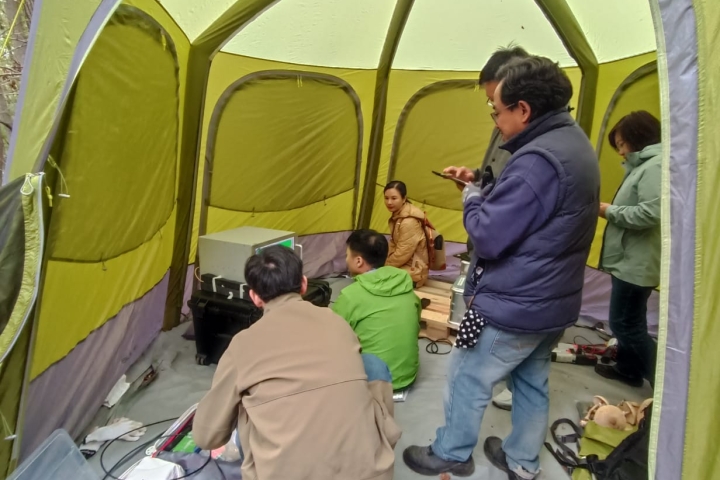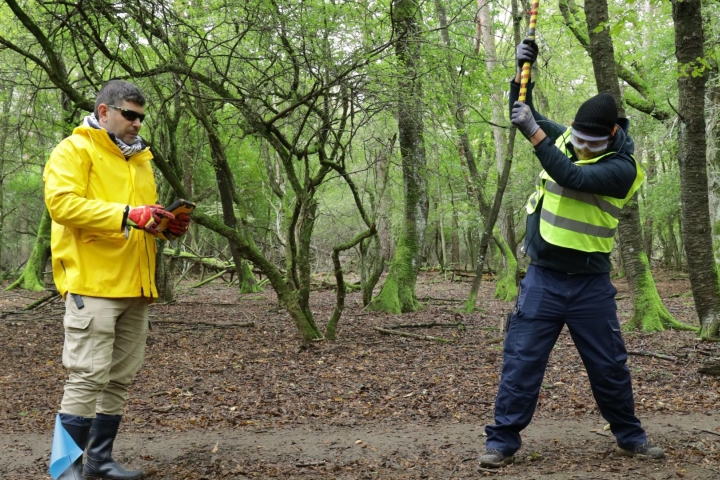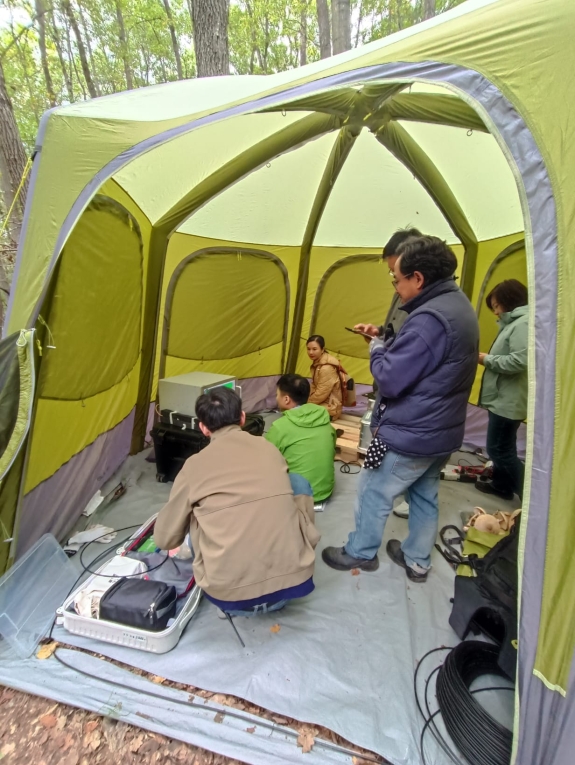Enhancing On-site Inspection Capabilities
In early October 2025, a two-week field test of On-Site Inspection seismic and non-seismic techniques was conducted in the Čachtická cave area in western Slovakia. Hosted by the Nuclear Regulatory Authority of Slovakia, with expert support from the Slovak Academy of Sciences, the event brought together 13 technical experts from 7 States Signatories, 6 host-country experts, and staff from CTBT's Provisional Technical Secretariat (PTS).
Fine-Tuning Workflows Ahead of the Integrated Field Exercise
The main objective of the activity was to optimise data acquisition workflows and processing methods ahead of the upcoming large-scale OSI Integrated Field Exercise (IFE), thereby enhancing technical readiness and field-proven processes. The fieldwork also generated valuable geophysical datasets to support the future development of new tools for survey planning and forward modelling, data processing and 3D visualisation and interpretation.
Testing OSI Techniques in Realistic Conditions
The activity focused on three OSI geophysical techniques set out in paragraph 69 (f) and (g) of the Protocol to the Comprehensive Nuclear-Test-Ban Treaty (CTBT): active seismic surveys, resonance seismometry and electrical conductivity measurements, including electrical resistivity tomography and spontaneous potential.
The Čachtická cave system, extending over 4,000 metres with depths of up to 100 metres, provided a complex imaging target, offering realistic OSI-like conditions. Four survey profiles were applied across different sections of the cave system, allowing to refine workflows for a range of targets.
This marked the first field use of the new spontaneous potential equipment under electrical conductivity measurements. Active seismic and resonance seismometry techniques were conducted in a hybrid setup using the PTS nodal seismic data acquisition system.
Installation of a non-polarizable electrode for spontaneous potential measurements
Spontaneous potential measurements in progress with the Abem Terrameter LS 2 control unit of the PTS
Exploring Possible New Technologies: Distributed Acoustic Sensing
This was also the first time when Distributed Acoustic Sensing (DAS) technology for active seismic surveys was tested in OSI context, thanks to China’s technical support and expertise. During the field test, the DAS system was deployed on two 400-metre-long survey profiles installed alongside conventional three-component active seismic data acquisition nodes of the PTS to allow for a direct comparison and assessment of the DAS system’s performance under inspection-like conditions.
The use of DAS systems, which rely on fiber-optic cables to detect seismic waves, has attracted growing attention within the scientific community, including at the last CTBTO Science and Technology Conference (SnT2025). DAS offers a potential rapid-deployment alternative to traditional seismic data acquisition by the conventional geophones, with the ability to detect and capture data along an entire cable length with dense spatial sampling.
However, factors such as the cable installation method, sensitivity and ability to separate different types of seismic waves require further testing and validation before the systems can be integrated into OSI operations after the next IFE.
Installation of the conventional Geospace GSB3 three-component active seismic data recording nodes of the PTS and a fiber-optic cable for the DAS measurements along a survey profile

DAS interrogator from the Guangdong Zhenke Disaster Prevention Technology Co., Ltd in operation in the field

Hammer seismic source of the PTS
Lightning eVibe seismic source of Faraday Geophysics rented for the field test
ElViS seismic source provided by the LIAG Institute for Applied Geophysics
Sustaining Readiness in a Changing Verification Landscape
As technological innovation accelerates and verification challenges evolve, the CTBTO’s commitment to enhancing OSI readiness remains steadfast. Continuous technical development and collaboration with States Signatories are crucial to ensuring that, when the CTBT enters into force, its verification regime will be both credible and future-ready.
19 Nov 2025


